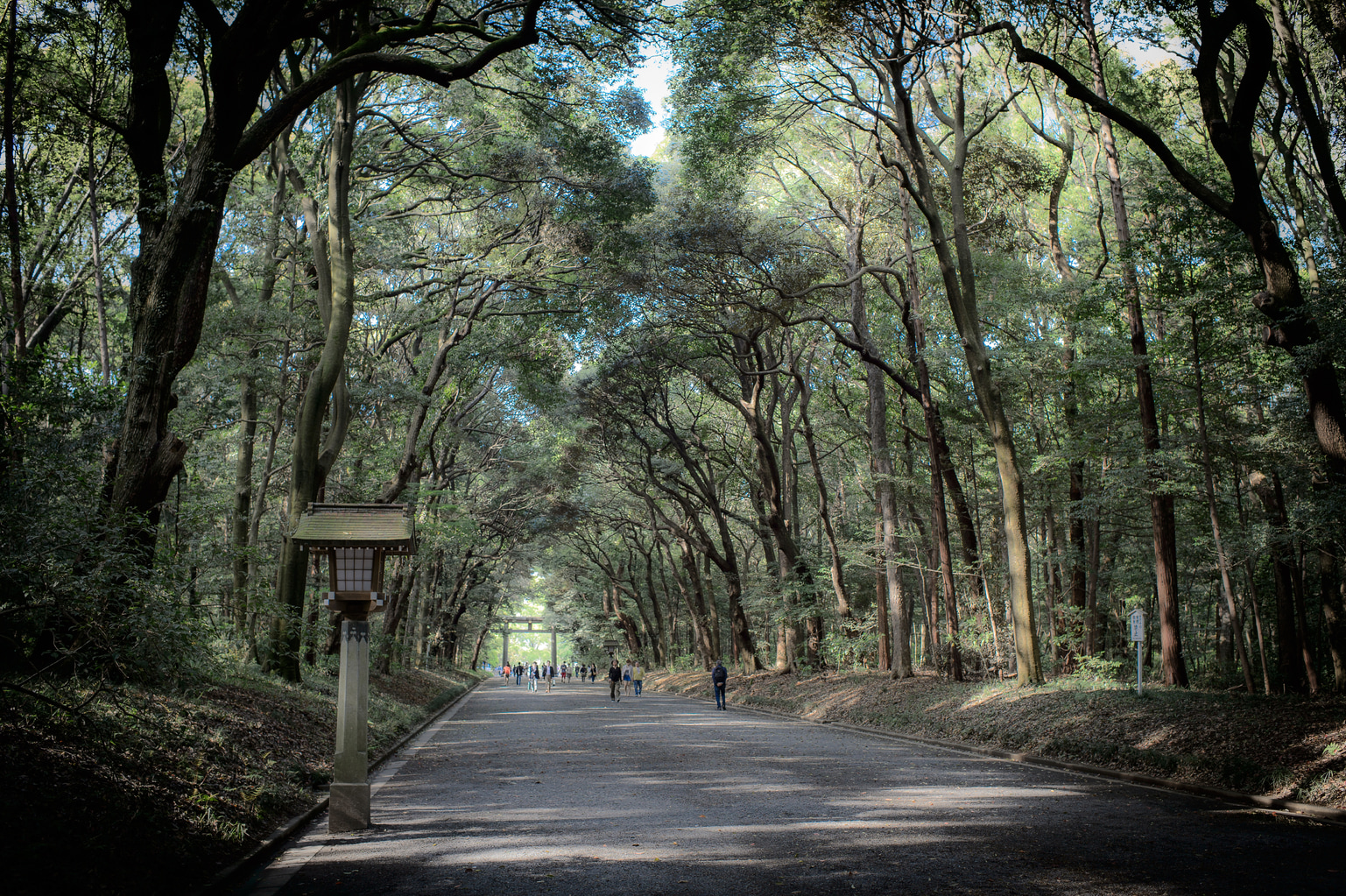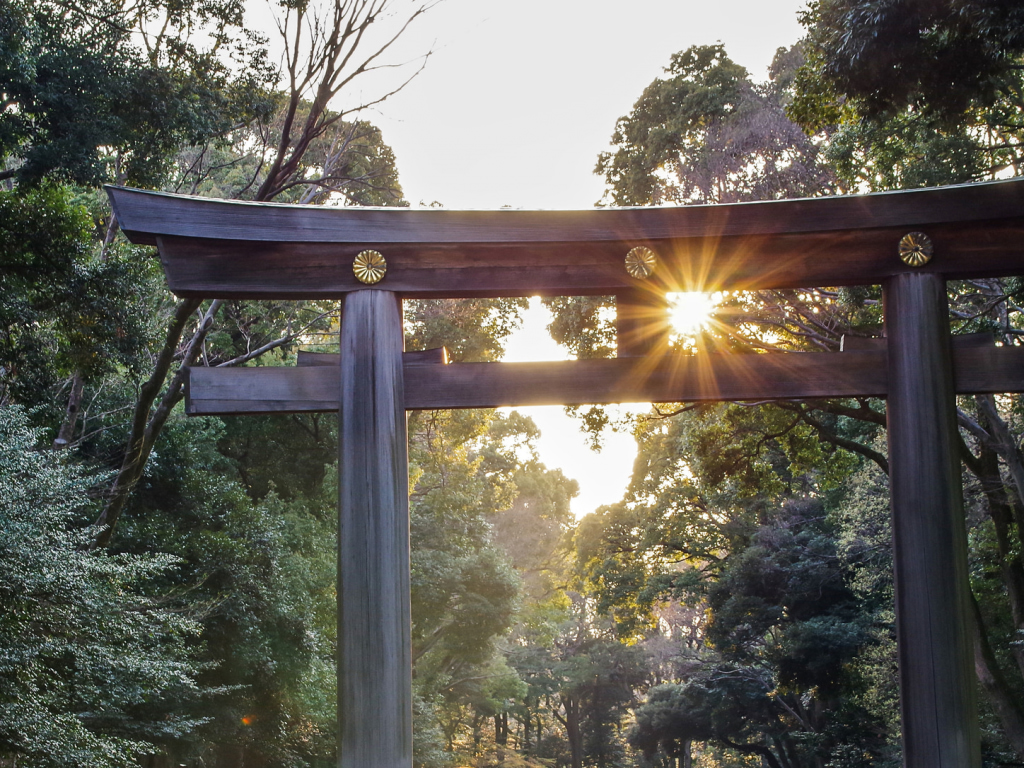Breathe a sigh of relief: the hottest Japanese summer on record is behind us and now we can enjoy the clear blue skies and gently refreshing breezes of the autumn months. If the latest booming tourist statistics are anything to go by, travellers all around the world will soon be heading this way to marvel at the reds and golds of the koyo season, while countless others will be poring over travel brochures to plan their sakura spring holiday. Last year a record-breaking 29 million foreign tourists visited Japan, a staggering figure certain to be surpassed in 2018 and well on the way towards the 40 million target set for 2020.
Naturally, the majority of these visitors will at some point make their way towards Tokyo – and it is fair to assume that many of them will take the time to step aside from the bustling crowds of Harajuku to enjoy the soothing respite of a stroll around the Meiji Jingu Shrine. Completed and dedicated to the Emperor Meiji and the Empress Shoken in 1920, the shrine and its surrounding gardens have since become one of the most popular tourist destinations in the country. How fitting it is that it will celebrate its centenary in a year when the eyes of the world will turn towards Tokyo as the city hosts the Games of the XXXII Olympiad.
I suspect, though, that only a very few of those visitors will be aware of one of the most compelling features of this sacred space. It stands at the heart of an eternal forest.
The Shrine Forest Project, launched in 1915 when much of the world was engulfed in the horrors of WWI, was the brainchild of Dr Seiroku Honda and Dr Takanori Hongo. They envisaged a living tribute, a gift to future generations that would reach maturity long after their own time. Such was the extent of their vision – and patience – that they planned for the forest to mature naturally, without significant human intervention, in four 50-year stages.

The path leading to Meiji Jingu Shrine
Strict conditions were laid down from the outset. The dominant trees should all be fully adapted to the climate and the soil type; they should be able to thrive amid the smoke and pollution of a rapidly developing city; and they had to look natural and appropriate for the divine shrine. In the end they selected 80 varieties of trees and a host of shrubs, resisting any temptation to include colourful ornamentals or exotic foreign imports that might demand careful nurture. The call for donations went out in 1916. Eventually almost 100,000 trees, including 365 different species, were brought to Tokyo and an army of volunteers began planting according to a very carefully constructed plan.
Initially, taller native specimens such as red and black pines were designated as the primary trees. Then, cypress, cedar and fir, and evergreen broad-leaf trees such as oak and camphor were planted to form an under-story. The pine trees were expected to wither away gradually over the next 50 years, allowing sunlight to reach the evergreen broadleaf trees that would take over in the second-stage forest.
“It is difficult to imagine a more marked contrast to the short-sighted selfishness of a throw-away society”
Today, one hundred years after the initial planting began, the eternal forest is into its third stage and spread across 700,000 square metres surrounded by all the concrete, steel and glass of a modern mega-city. The trees expected to flourish by this point were the evergreen broadleaves: the oak, chinquapin and camphor. And it seems that all is as it should be. The original number of species donated was 365 but – exactly as planned – this has decreased to about 270 by a process of natural selection. The cedars and pines that were the dominant trees during the first stage have done their job and have made way for a new generation.
In the hectic whirlwind of modern living, when patience is at a premium to the extent that even the world’s most powerful statesman chooses to dictate policy in a tweet, the generous long-term vision of men like Honda and Hongo and the slowly unfolding evolution of their green gift to the future are salutary. It is difficult to imagine a more marked contrast to the short-sighted selfishness of a throw-away society that seems intent on devouring the world’s natural resources at a rate that shows scant regard for the needs and well-being of all those who will follow in our destructive footsteps. Next time you tread the winding paths that surround Meiji Jingu Shrine, please pause for a moment to appreciate the selfless work of two visionary men who so clearly understood their obligation to tomorrow’s world.
Brian Christian is the Principal of the British School in Tokyo.
Sponsored Post









